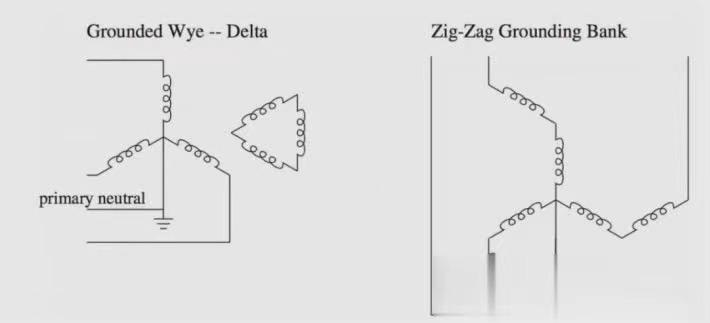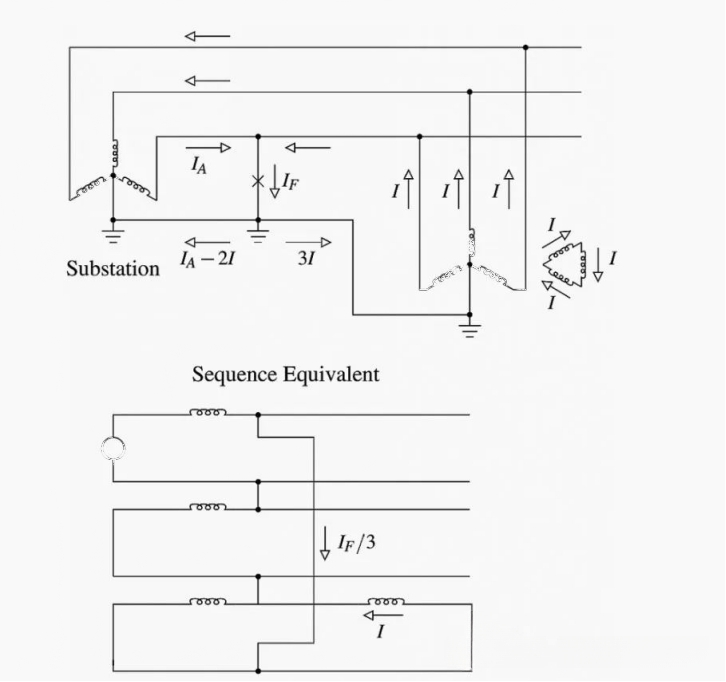In the power system, the grounding transformer is an important device, and its role is related to the safety, reliability, and operating efficiency of the power system. Although the grounding transformer is not common in the power system, its function is crucial.
The basic role of the grounding transformer
The grounding transformer is mainly used to create an artificial neutral point and return part of the current in the system through the ground, thereby protecting equipment and personnel from electric shock and equipment damage. The following are several basic roles of the grounding transformer:
Neutral point grounding: In the power system, the neutral point is usually connected to the earth through a grounding transformer to form a safe grounding system. The main purpose of this is to ensure the safety of the system and prevent equipment and personnel from being exposed to excessive voltage, thereby avoiding electric shock accidents.
Fault current loop: The grounding transformer can also provide a path for the fault current in the system to return through the ground, thereby reducing the impact range of the fault on the power system and helping to quickly detect and locate the fault point.
Stabilize voltage: Through the grounding transformer, the voltage of the system can be stabilized and a more reliable power supply can be provided. Especially when there is an unbalanced load or a single-phase grounding fault, the grounding transformer can help the system maintain normal operation.
Uses of Grounding Transformers
Grounding transformers are sometimes used in power distribution systems. Grounding transformers provide a zero-sequence current source. Sometimes grounding transformers are used to convert a three-wire, ungrounded circuit to a four-wire, grounded circuit.
Figure 1 (see figure below) shows the two most common grounding transformers. The zigzag connection is the most widely used grounding transformer.

Figure 1 – Transformer ground connections (zigzag and grounded “Wye-Delta”)
Figure 2 shows how the grounding busbar provides current for a ground fault. A grounding transformer, the only source of grounding for the distribution circuit, should be in place when the three-phase power is in use.
If the grounding transformer is lost, line grounding can cause excessive neutral voltage between phases of the unfaulted phases, and unbalanced loads can also cause neutral shifts and overvoltage.

Figure 2 – Grounding Transformer for Ground Fault Feeding
The grounding transformer must handle the unbalanced load on the circuit as well as the load during a line-to-ground fault.
If the circuit unbalance is minimal, we can significantly reduce the rating of the transformer. The transformer is rated only to carry short-duration (but high-amplitude) faults, and 10-second or 1-minute ratings are often used. The impedance of the grounding transformer can also be chosen to limit the ground-fault current.
Each leg of the grounding transformer carries one-third of the neutral current and has a line-to-neutral voltage. Therefore, in a grounded Wye Delta transformer, the total power rating including all three phases is the neutral current times the line-to-ground voltage:
Zigzag transformers are more efficient than grounded Wye-Delta transformers. In a zigzag transformer, each winding has a voltage to-ground lower than the line-to-ground voltage by a factor of √3, so the transformer bank can be rated lower:
ANSI/IEEE Standard 32-1972 requires a 3% continuous rating for 10-second-rated devices (which means the short-time rating is 33 times the continuous rating).
The continuous rating of the 1-minute rated current group is 7%. On a 12.47 kV system with a ground fault current of 6000 A, the Zigzag requires a rating of 24.9 MVA. We will size the group based on the 24.9 MVA rating for 10 seconds, which equates to a continuous rating of 0.75 MVA, so the group can handle 180 A of neutral current continuously.
For Zigzag and Grounded Wye-Delta transformers, the zero sequence impedance is equal to the impedance between the transformer’s primary and secondary.
Another application for grounding transformers is telephone interference due to the current in the neutral/ground conductor. By placing the grounding transformer group closer to the source of the neutral current, the grounding transformer group can divert some of the current from the neutral to the phase conductors, thereby reducing the neutral current that interferes with the telecommunication lines.
Grounding transformers can also be used in utilities that require a ground source during abnormal conditions.
One application is in combination feeders that supply secondary network loads and other non-network line-to-ground connected loads. If the grid transformer is delta-grounded, then in the event of a line-to-ground fault, the grid will backfeed the circuit.
If this occurs when the main feeder breaker is open, the single-phase loads on the unfaulted phase will see overvoltages because the circuit is back-feeding through the grid load as an ungrounded system. Grounding groups installed on the feeders prevent overvoltages in the event of a backfeed. A similar application is found when distributed generators are used.
If the generator drives an island that is separated from the utility source, a grounded Wye-Delta transformer is usually specified as the interconnecting transformer to prevent overvoltages.
Even if the grounding busbar is not the only source of grounding, it must be sized to withstand the voltage imbalance. The zero-sequence current of the grounding busbar is the zero-sequence voltage divided by the zero-sequence impedance:
When one phase voltage is disconnected upstream (usually due to a blown fuse or tripped single-phase recloser), a severe voltage imbalance results. In this case, the zero-sequence voltage is equal to the line-to-neutral voltage. The grounding busbar attempts to maintain the disconnected phase voltage and supply all loads on that phase, which can result in severe transformer overload.
Specific application scenarios
Grounding transformers are mainly used in the following aspects:
Power plants and substations: used to ground the neutral point of the power system to ensure the safe operation of the system and the safety of personnel.
Transmission lines and distribution systems: In long-distance transmission lines or complex distribution systems, grounding transformers help manage the current distribution and voltage stability of the system.
Industrial facilities and large buildings: In industrial and commercial electricity, grounding transformers play an important role in protecting equipment and personnel and preventing losses and dangers caused by electrical faults.
Technical implementation and design considerations
The design of grounding transformers needs to consider multiple factors, including:
Rated capacity and voltage level: Select a grounding transformer with appropriate capacity and voltage level according to the needs of the power system.
Insulation and withstand voltage capacity: Ensure that the grounding transformer has good insulation performance and withstands voltage capacity to cope with various power system environments and working conditions.
Safety and reliability: The design and installation of grounding transformers must comply with relevant safety standards and specifications to ensure the reliability and long-term stable operation of the equipment.
Summary
In summary, as an important safety device in the power system, the grounding transformer not only provides a neutral point grounding function but more importantly, it protects the power system and personnel from the potential dangers caused by electrical faults. Reasonable design and use of grounding transformers can effectively improve the safety and reliability of power systems and are an indispensable part of modern power systems.